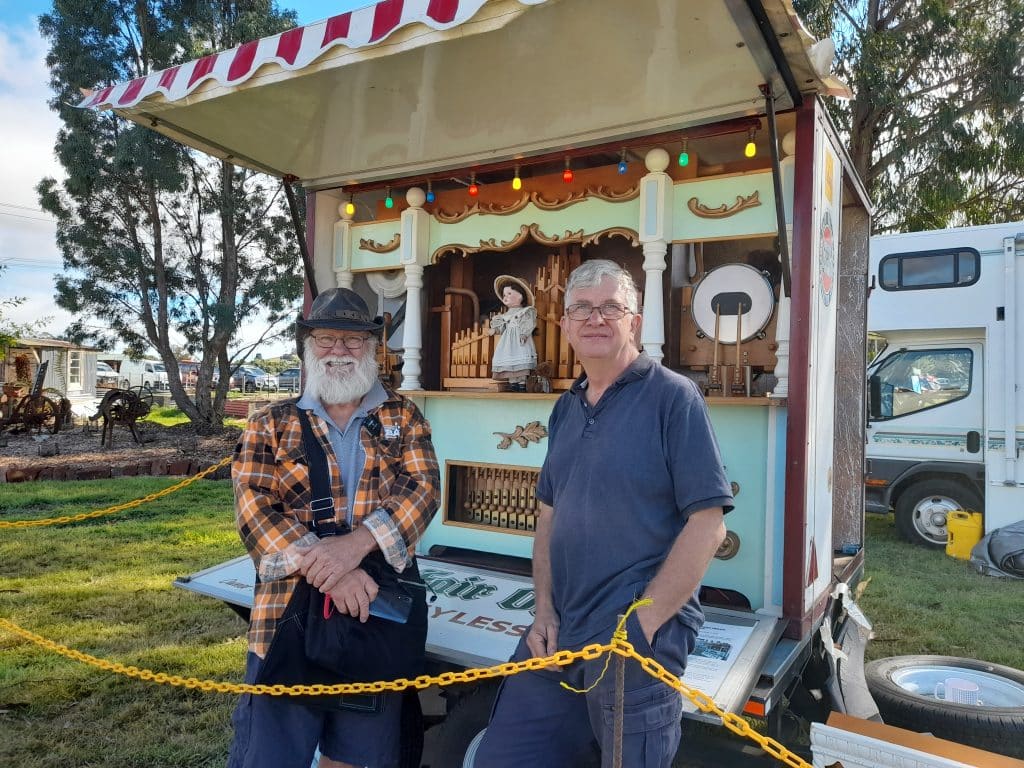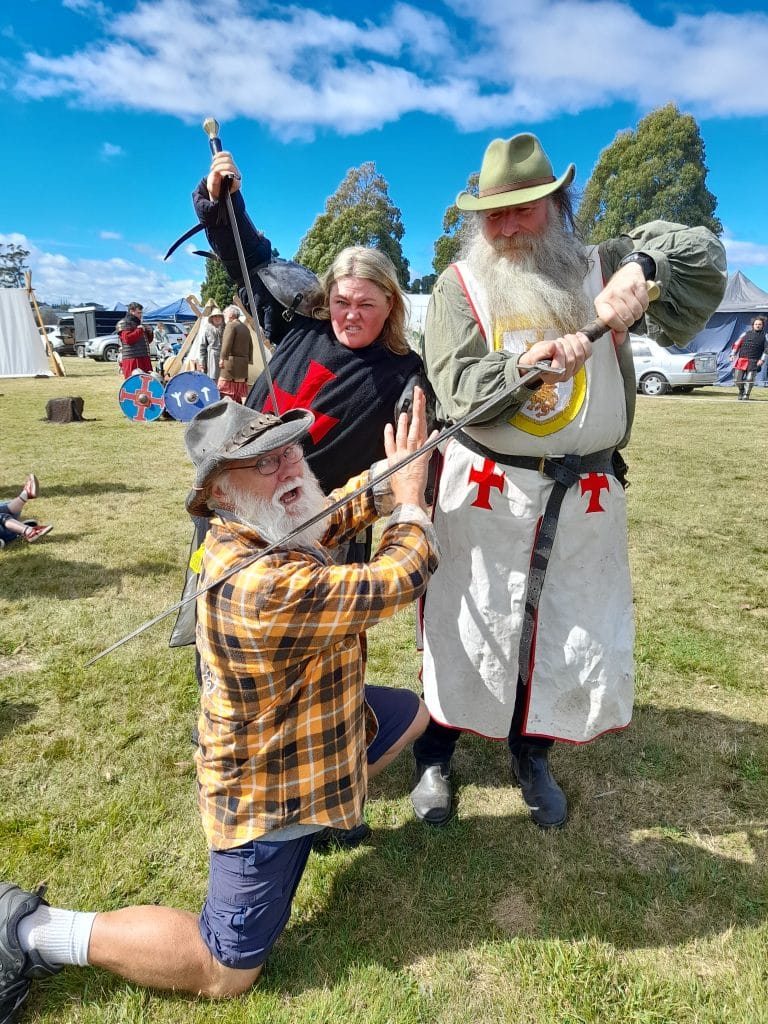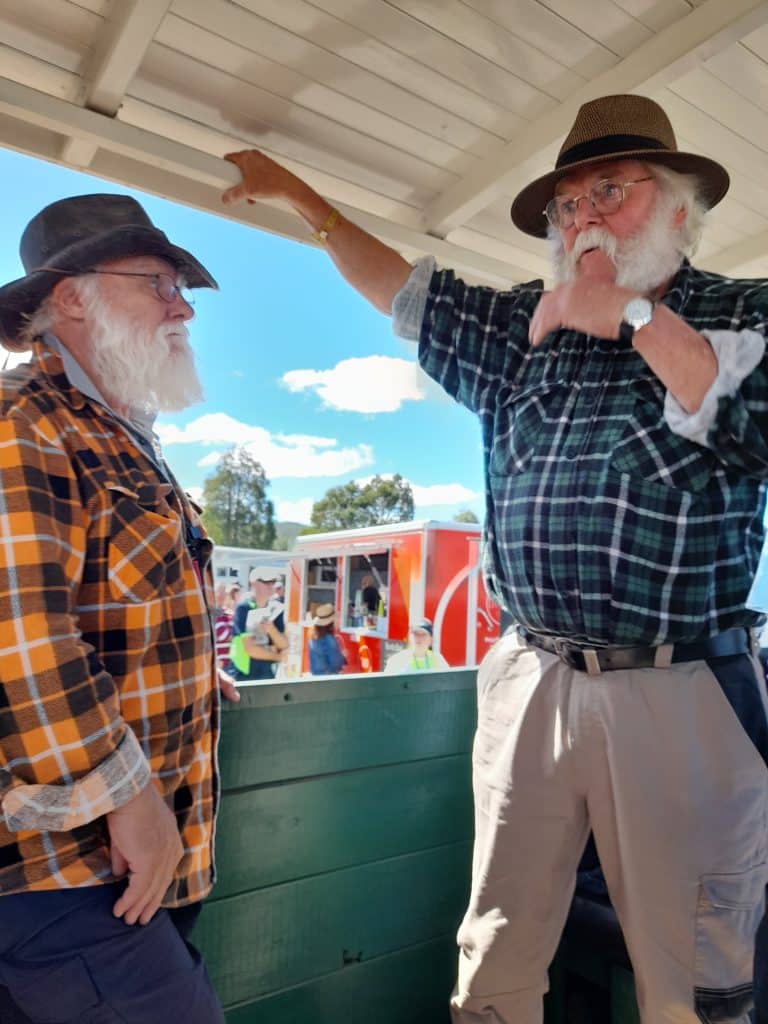On the show this week we are once again at Sheffield in Tasmania and visiting the Steamfest with more things to see and do there.
First of we meet Robert again from Pearns Steam World in Westbury who is here this time with a steam run organ. Its a 33 keyless fair ground organ. Its uses cardboard books. Robert goes through how the organ works. The books control the sound, and the cuts in the book have to be precise. The books are still available for a song. It costs $11 a metre and a song is generally 20 meters long and is an expensive exercise having the tunes. Listen in as Robert takes you through the workings of the organ.

Next on the show we go back in time to The Knights Templar in Tasmania and chat with Rebecca and Bill, who take time out from going through their paces to chat.
Rebecca enjoys the sport and likes to dress up in the gear and fight. Bill has been with the sport for about 8 years and enjoys the sport. The gear they where protects the body.
The armour weighs about 35 kilos including the helmet and then the sword. They have both enjoyed doing other martial arts but enjoy this sport compared to the other sports. Its men against women. Bill is a Knight and Rebecca is a Man at Arm. There are about 4 levels of grading, and they also make their own armour.

Next on the show we meet Peter and The Wee Georgie Wood steam train. The train is normally seen in Tullah Tasmania and has come to Sheffield. Its not a regular at the Steamfest, but has finally come here for a visit.
The Wee Georgie Wood Steam Railway Inc commenced operations in 1987 utilising some 1.8 kilometres of 2 foot (610mm) gauge track and the restored 1924 Wee Georgie Wood steam locomotive as well as rolling stock of that era from other West Coast tramways.
It is based on part of the former North Mount Farrell Mine Tramway and operates as a heritage tourist attraction for the people of Tullah and surrounding areas and visitors to the West Coast.
The original tramway was the only means of transport for the mine and its people from 1902 until roads were built to the Tullah area in 1961.
Following the commencement of mining in the Tullah area in 1897 the Tullah town-ship became established as a small mining settlement by 1900. The original transport in and out of Tullah was by foot and pack-horse following pack tracks to Mole Creek and to Rosebery. For several years only high grade lead silver ore from the mine was sent by pack horse for transfer to the Emu Bay Railway line near the old Pieman bridge down river. This system was replaced by the North Mount Farrell Tramway which was opened in November 1902.
The tramway was constructed originally using wooden rails and horse drawn carriages which connected to the Emu Bay Railway at Boco. When operations at the mine increased, the Company became more financial, a new two foot gauge line was constructed with steel rails for tiny steam locomotives. The new line followed a major route along the Pieman River to connect with the Emu Bay Railway Line at Farrell Siding 8½ miles away.
The first steam locomotive in use on the new tramway was a 6 ton Krauss locomotive built in 1892 and numbered 2640 . It continued in use until the early 1920s.The Krauss locomotive was supplemented in 1910 with an Orenstein and Koppel locomotive built in 1901, numbered 718 and weighed 6 ¾ tons. This was purchased from the Magnet Mine near Waratah and was in use until about 1928.
In 1924 a new 6 ton Fowler locomotive, Wee Georgie Wood, numbered 16203 arrived to replace the ageing Krauss. In 1928 another new 6 ton Fowler locomotive, Wee Mary, numbered 17732 arrived to replace the Orenstein and Koppel. Wee Georgie Wood and Wee Mary continued to share the workload until 1946 when Wee Mary was withdrawn from service and parts used to rebuild Wee Georgie Wood.
To maintain services a 10 ton Krauss Locomotive built for the Mt Lyell 2 foot gauge system built in 1908 was acquired in 1949 and continued in service until the line was closed. This locomotive carried its original Mt Lyell numbering, No 9.


